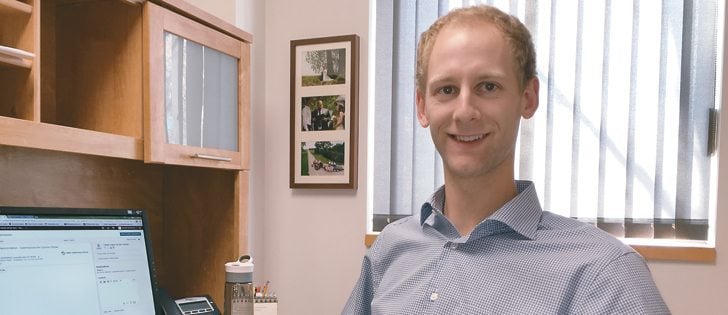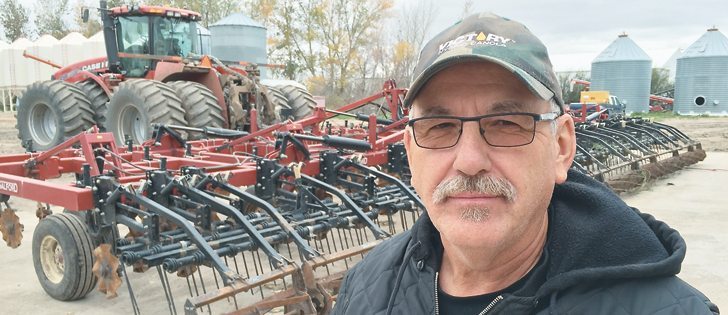This is part of a series exploring how farmers, ag consultants and service providers are professionalizing agriculture by integrating the many skills required by today’s complex and challenging industry.
This series looks at how farmers, agriculture consultants and service providers are professionalizing agriculture by integrating the many skills required by today’s complex and challenging industry. You can follow the entire series here.
Garrett Sawatzky wasn’t the model of today’s professional farmer when he entered the University of Manitoba’s agriculture diploma program.
“I was a farm labourer. I helped my dad,” said Sawatzky, sitting in his office at the U of M campus.
However, a few years later he feels capable of running one of today’s complex farming operations and keeping up with the whirlwind of changes occurring in the industry.
“I could see it from the inside, more as a manager than as a person driving a tractor.”
Sawatzky is now one of the ag diploma course’s farm business management instructors and a graduate of both the diploma program and the “two plus two” extension, which let him turn the diploma into a full degree with two more years of education.
He’s typical of what the diploma program is trying to create in the farm kids who enrol, but the university knows that it is becoming more daunting to create competent farm managers.
Down the hallway from Sawatzky, School of Agriculture director Michele Rogalsky has been trying to re-engineer the diploma program to make it relevant for “2020 and beyond.”
That’s not an easy task. Farming has experienced a bewildering revolution on many fronts over the past generation, and today’s farmers need many more skills than previous generations.
Read Also

U.S. bill could keep out Canadian truckers
The Protecting America’s Roads Act, which was tabled in the U.S. House of Representatives at the beginning of October, would “rid the country of illegal immigrant commercial truck drivers and ineligible foreign nationals.”
However, the core concepts of crop production, livestock production and farm management haven’t changed since the program was founded decades ago.
So how does a program continue to supply those foundational biological and management basics while including vital contemporary skills in data management, human resources and public relations without adding years to the program?
“I’ve been living this curriculum review,” said Rogalsky, an energetic and optimistic educator who does not seem put off by the task.
She has been talking to farmers, agriculture industry leaders and students about what farmers of the future will need and how to give it to them.
Soon she’ll be surveying recent graduates about the same thing.
Rogalsky thinks the key to keeping graduates current through decades-long careers means turning them into lifelong learners, far more than in the past. That, as much as loading concrete content into their heads, is what the program is now trying to provide for students.
“We’re creating a learning community,” said Rogalsky.
That has always existed to some degree as agriculture students formed permanent friendships with other farmers and created peer groups to provide advice, feed-back and good ideas.
However, those networks can now become more dynamic as smart phones and high speed internet give farmers new ways to keep up with changes and their colleagues’ reactions.
The new technology also helps farmers break one of the barriers that has stopped them from engaging in the sort of business and professional organizations that urban professionals and business operators rely upon.
Professional upgrading and industry conferences can now go to the farm, into the tractor cab and onto the elevator driveway.
“It’s not as formal as at the Chamber of Commerce, but it has the same role,” said Rogalsky about building electronic bridges be-tween farmers.
Those bridges will play a bigger role in both the School of Agriculture and across rural Western Canada now that farmers need to be masters of human resource management, financial management and public relations as well as be able to produce and manage substantial crops and livestock businesses.
“It has to be accessible to them,” said Rogalsky.
“What they do here isn’t the end of their training.”


















